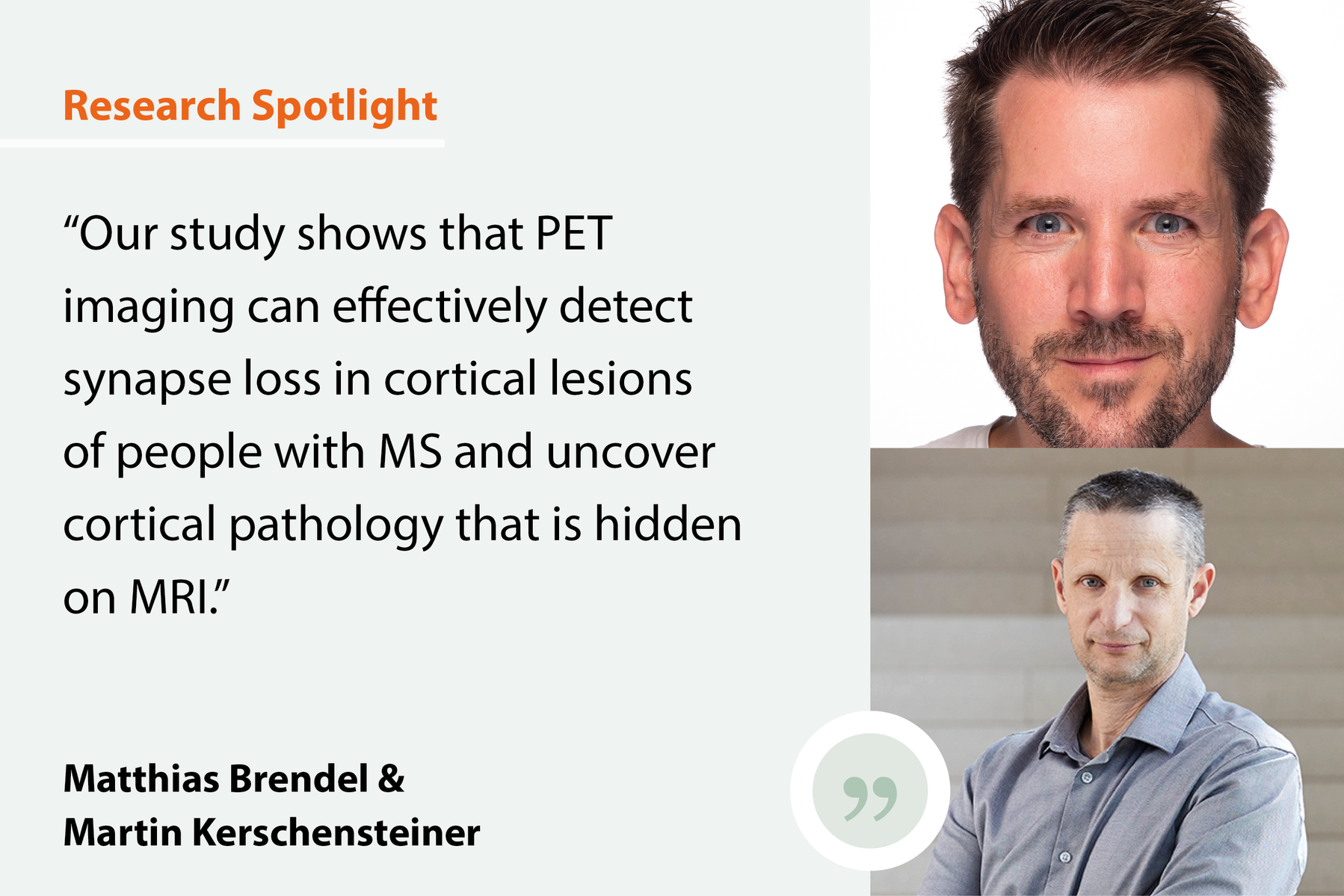This is a summary of Emily M. Ullrich Gavilanes et al. .SV2A-PET imaging uncovers cortical synapse loss in multiple sclerosis. Published in Science Translational Medicine 17, eadt5585 (2025). DOI: 10.1126/scitranslmed.adt5585
The challenge
Multiple sclerosis (MS) is a chronic inflammatory disease of the central nervous system. Relapsing MS is characterized by myelin loss, axonal damage, and infiltration of immune cells. Recent insights have focused attention on alterations in the gray matter of the brain, as these appear to be important indicators of disease progression – they predict the risk of disease worsening and the transition from relapsing to progressive disease. In particular, cortical gray matter lesions have been shown to correlate with disability as well as with cognitive decline and fatigue. However, these lesions are challenging to detect with magnetic resonance imaging (MRI). Looking for better ways to detect cortical synapse loss, we turned to positron emission tomography (PET) imaging.
Our approach
We investigated whether SV2A was a suitable biomarker for synaptic loss. In particular, we used the synaptic vesicle protein 2A (SV2A)–targeting radiotracer [18F]UCB-H to detect synapse loss. To study whether SV2A-PET imaging can detect synapse loss in cortical lesions, we used a mouse model. We also paired histological examinations of cortical tissue with PET imaging to demonstrate that synapse densities measured by PET imaging correspond to the densities of immunohistochemically labeled synapses in the same lesions. To uncover emerging synapse loss, we compared the SV2A-PET signals from the left and right hemispheres to identify areas of hemispheric synaptic imbalance that potentially reflect damage in the cerebral cortex. For this purpose, we performed SV2A-PET imaging in a total of 31 individuals with multiple sclerosis at various stages of the disease process.
Our findings
We found that estimates of lesion volumes derived from PET imaging correlated well with histologically determined synaptic densities and exceeded lesion volumes obtained through MRI. The PET lesion volumes correlated well with cross-sectional clinical severity in individuals with multiple sclerosis. Furthermore, we could use SV2A PET to uncover areas of cortical pathology in individuals with MS, the size of which correlated with the extent of disability, fatigue, and cognitive dysfunction observed in the same individuals. These findings suggest that PET imaging can effectively detect synapse loss in cortical lesions of multiple sclerosis patients.
The implications
This method is a promising tool for detecting and monitoring disease progression.
Creating SyNergies
The study was led by our members Matthias Brendel and Martin Kerschensteiner and included our members Lisa Ann Gerdes and Nicolai Franzmeier. By joint effort of these labs, we were able to apply the same radiotracer in experimental mouse models and patients with multiple sclerosis, and to combine state-of-the-art immunohistochemistry with novel molecular imaging. Advanced image quantification was feasible through the macroscale imaging hub.

